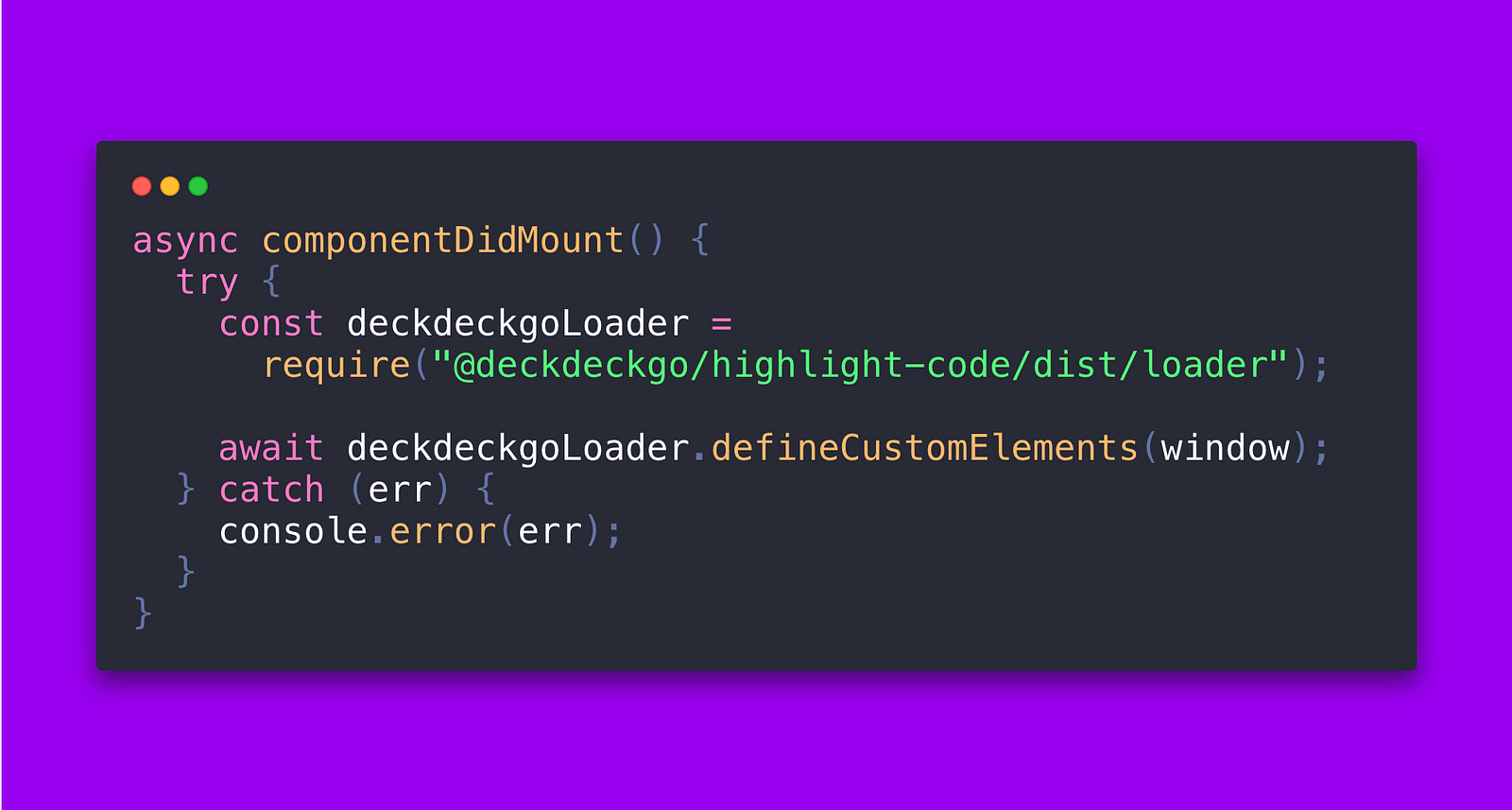
I am a big fan of Carbon! I often use it to share tips or mistakes I did on my Twitter feed.
The other day, while I was cooking dinner, the idea suddenly hit me: why not improving our DeckDeckGo Web Component to highlight code, which use PrismJS under the hood, to display per default such stylish cards instead of “just” displaying naked elements.
I ate my dinner and implemented this idea the same night. I woke up the following days and was still pleased with the result. Therefore I even decided to add it to my personal website developed with Gatsby.
That’s why I’m happy to introduce gatsby-remark-highlight-code, a new Gatsby plugin to add stylish cards and syntax highlighting to code blocks in markdown files.
Features
The main advantages, in my opinion, of this new plugin are the followings:
- Use PrismJS to highlight code and load at runtime any languages which are supported by the library. Nothing to develop or install, the component does the job at runtime.
- Many styling options through CSS4 variables (see the documentation for the extensive list).
- Not yet implemented in the plugin, but the component can also display automatically line numbers or highlight selected rows. These features can be added relatively quickly if you would need these.
- Finally, the plugin use our Web Component developed with StencilJS. Therefore, if you are please with the result, you could reuse it easily in any modern web applications regardless of the framework (or none) you are using!
Getting Started
This plugin can be added in the three following steps:
Installation
To install the plugin and the component, run the following command in a terminal:
npm install gatsby-transformer-remark gatsby-remark-highlight-code @deckdeckgo/highlight-code --saveConfiguration
In your gatsby-config.js configure (or add) gatsby-transformer-remark:
plugins: [
{
resolve: `gatsby-transformer-remark`,
options: {
plugins: [
{
resolve: `gatsby-remark-highlight-code`
}
]
}
}
];Load the component
Stencil components should currently be loaded at runtime in Gatsby (see issue #1724 which should be soon finally solved as I heard in a Stencil chat recently).
For that purpose, load the @deckdeckgo/highlight-code once in one of your pages or components are mounted.
For example add the following in the main file of your website, in your index.js, or in the template of your blog or simply load it where you need it.
async componentDidMount() {
try {
const deckdeckgoLoader =
require("@deckdeckgo/highlight-code/dist/loader");
await deckdeckgoLoader.defineCustomElements(window);
} catch (err) {
console.error(err);
}
}That's it, the plugin is configured and ready. After your next build, the code of your blog will be display in stylish cards with syntax highlighting 🎉
Cherry on the cake 🍒🎂
As I explained above, the exact same Web Component can be used in any modern web applications and is, of course, open source. But the other cherry on the cake is the fact that we are using it in our open source web editor for presentations and developer kit.
Therefore, if you are going to showcase code in an upcoming talk, give a try to DeckDeckGo 😃

To infinity and beyond 🚀
David